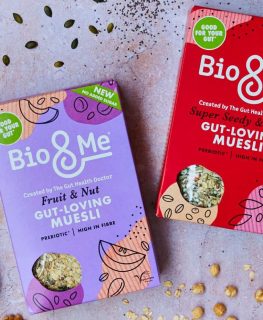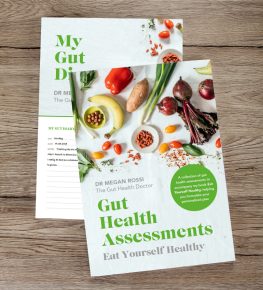With the fermentation craze growing fast, by now perhaps you’ve dabbled in kombucha or kefir – but what actually are fermented foods and what does the science say? Here’s the inside scoop on fermentation, the evidence behind the proposed health benefits, and how to make your own Kimchi.
What is fermentation?
Fermentation is when bacteria and yeast ‘pre-digest’ food and drink, producing a range of vitamins, beneficial organic acids and other health-promoting compounds. Generally, anything that uses microbes to transform simple ingredients fits the ‘fermented food’ bill. They may have boomed recently, but fermented foods have been around for thousands of years! Some of my favourites include kombucha (fermented tea), kefir (fermented milk, or sugary water if you use water grains), live yogurt and sauerkraut (fermented cabbage).
The health benefits: where’s the evidence?
Traditional fermented foods are associated with a whole host of potential benefits, including increasing vitamin concentrations (such as folate and vitamin B12), reducing anti-nutrients, lowering blood pressure, supporting our immunity and having a calming effect. Fermenting may also lower gluten and lactose content in some sourdough bread and dairy, respectively.
Although I am a big fan of fermented foods and anecdotally, I’ve seen first-hand the physical and mental benefits of them, with my science hat on, I must declare the clinical evidence for most types is currently limited. The exception being fermented dairy, where there is decent evidence for the health benefits across heart health, bone health, digestion and weight management. The clinical evidence aside, our ancestors have been having fermented foods for thousands of years and associating them with benefit, not to mention they are so full of flavour. So yes high-quality clinical studies need to be done, but in the meantime I do recommend people include fermented foods into their daily diet.
They may also contain live microbes, although it’s worth noting that’s not the case for all fermented foods, as many die off in the processing.
Fermenting at home: a beginner’s guide
Despite the rumours, fermenting is surprisingly little effort – once you’ve prepared it, you just leave it and allow the microbes to do all the hard work. You can later return to a dish that’s transformed and ready to serve. Some fermented foods (such as kimchi or sauerkraut) do require more love and care, but there are plenty of time-efficient options, including kefir, yoghurt and my sourdough wraps (recipe in my book!).
Before you begin, I should also make you aware that, as with dietary fibre, going from a little to a lot too quickly could make some people extra gassy (while your inner community of microbes have a feast!), so it’s best to increase gradually. Chat to your GP first if you have a weakened immune system or are pregnant too.














